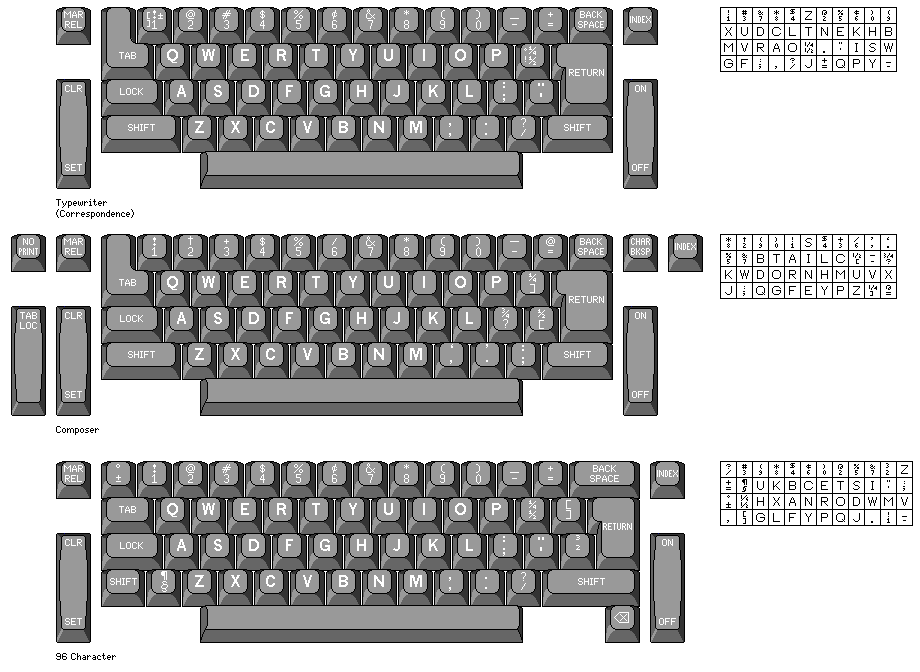
Today typewriters are considered to be obsolete. As I find it somewhat awkward to put a neat address on an envelope with a laser or inkjet printer, without using expensive sticky label paper, I find that to be something of a pity.
But it certainly is true that in today's age of high-resolution laser printers, the IBM Selectric Composer is obsolete. However, while it is certainly obsolete now, I had thought, back in the age when daisywheel printers and then daisywheel typewriters were common, that it was a pity that someone - at least IBM, as it did have its Wheelwriter daisywheel typewriters, as the patents likely hadn't expired - didn't bring the capabilities of the IBM Selectric Composer to the daisywheel, perhaps with some additional improvements.
So, while it is too late for it to matter in a practical sense, this page looks at the IBM Selectric Composer, and how its limitations could have been addressed in an electronic successor.
Below is a diagram showing the keyboard layouts and the arrangements of characters on the elements of the original IBM Selectric typewriter, the IBM Selectric Composer, and the later 96-character Selectric III as well as various IBM electronic typewriters:

When I first encountered the arrangement on a 96-character element, it seemed to be very similar to that of an 88-character element, only rearranged; for example, the letter Z is still in the top row along with the numerals. But when I looked at the arrangement of characters on Composer elements as well, I saw that indeed IBM did take into account of what it had learned in designing the Composer element; except for the letter U, the same letters are on the third row as on the Composer element, and the narrow letter I has been moved off that row.
Two things are common to all three of these arrangements. Not only are the two widest letters, M and W, on the third row, on the widest part of the element, but also the five letters with lowercase descenders in the Latin alphabet, g, j, p, q, and y, are all on the bottom row, thus allowing extra space between the rows of characters.
The typestyles provided on 96-character elements were the same ones previously provided with the 88-character elements, including the proportionally-spaced ones. Although no commonplace IBM typewriter product, if one excludes everything related to the Selectric Composer on the grounds that it is intended for typesetting, and not office typing, using 88-character elements offered proportional spacing, those typestyles were first introduced on 88-character elements for the IBM Mag Card Executive word processing system. With the possible caveat that while the proportionally-spaced typestyles on 96-character elements first introduced with the Electronic Typewriter Model 50 closely resembled the Mag Card Executive typestyles of the same names, they may have been slightly adjusted in width.
This system was used by large offices; I had believed that there was one used to prepare correspondence on behalf of the President of the United States of America at one time, but then I found that the correspondence that led me to that conclusion was dated after the availability of the Electronic Typewriter Model 50.